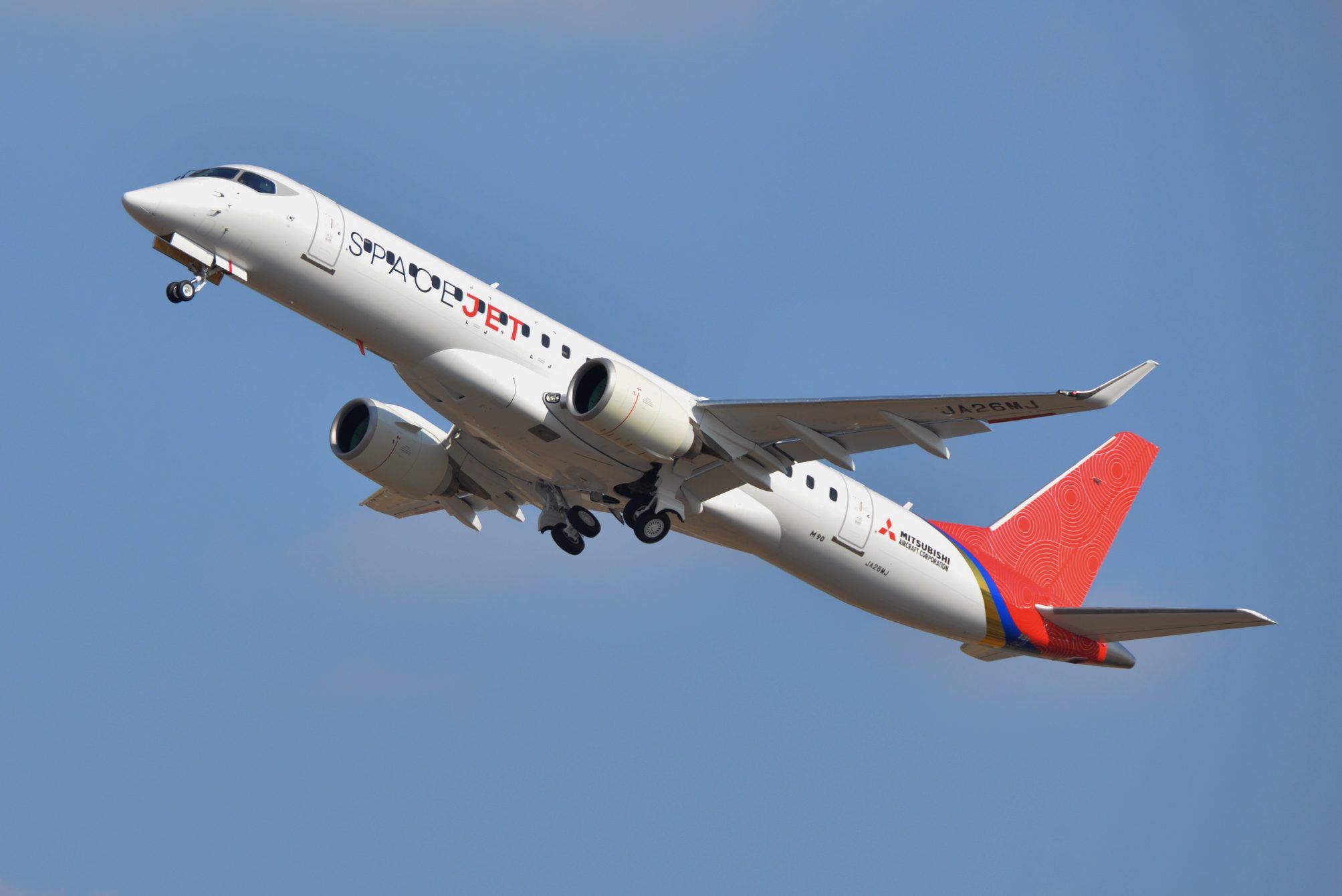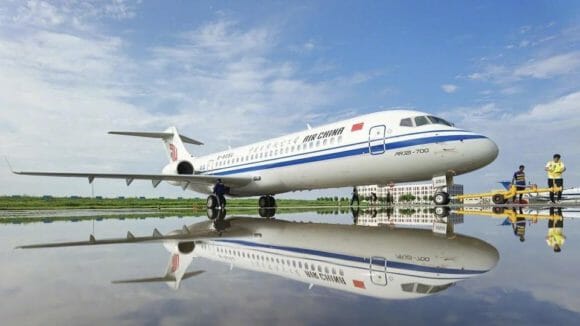
20200318 Mitsubishi Aircraft FTV10 First Flight Images 4
Mitsubishi Heavy Industries (MHI) will reassess a possible program restart of the SpaceJet during the current financial year 2021, which runs until March 2022. The decision is marked as a ‘key activity’ in this year’s planning, the Japanese company said during its FY20-results presentation on May 10. Mitsubishi will also continue with type certification documentation activities.
The announcement comes exactly a year after Mitsubishi said it would drastically reduce the SpaceJet budget, pause the certification program, and stop the development of the smallest version of the regional airliner, the M100 76-seater. This was followed later that same May last year by the decision to significantly reduce its global activities and close offices outside Japan, notably in Renton and Moses Lake. All activities would be consolidated in Nagoya, albeit at a loss of 1.500 staff that worked exclusively on the SpaceJet. Key members of the management team either left or have been part of an internal reshuffle.
Uptick in regional air travel
The decisions made in 2020 were interpreted as a de-facto end of the SpaceJet, which was launched as the Mitsubishi Regional Jet (MRJ) back in 2008 with the MRJ90 90-seater but updated in 2019. Contributing to last year’s decision will have been the uncertainty over the recovery of air travel following the Covid-pandemic. However, the regional aircraft segment has been the first and most successful to benefit from an uptick in demand.
On May 10, Mitsubishi said it expects air travel to recover to 2019-levels in 2023. The reassessment of its 2020 decision could be interpreted as a signal that the Japanese OEM isn’t prepared to forego its multi-billion investment in the SpaceJet program and sees opportunities to capture its share of the market. This is dominated now by Embraer and its E-jets family, although the newer E2-family depends mostly on the largest E195-E2. Mitsubishi has only 157 confirmed orders for the M90 plus 120 options, while the M100 has fifty firm and fifty options from Mesa Airlines. Aerolease Aviation canceled its 2016-order for ten firm and ten options last January.
On the other hand, if Mitsubishi reverses its decision and commits to the SpaceJet again, it will have to reinvest heavily in both its workforce, production capabilities, and organization at Mitsubishi Aircraft Corporation. This is at odds with the huge losses and impairments included in the results since 2018. Its strategy to 2023 is focused on continued fixed cost reductions, stopping declining profits, and improve margins.
Also, what would a restart mean? Will Mitsubishi continue with just the M90 or also commit to the smaller M100? Until the Japanese come up with clearer answers, the actual meaning of their announcement on May 10 remains vague.
The 2020 results of MHI include a ¥116.2 billion loss on the SpaceJet compared to minus ¥263.3 billion in 2019 and minus ¥85.1 billion in 2018. The 2019 loss includes a ¥122.4 billion impairment and ¥140.9 billion in development costs, while deferring ¥233.1 billion in program-related tax assets. The purchase of the Bombardier CRJ program resulted in ¥60 billion in goodwill losses. Lower spending on the SpaceJet in 2020 positively impacted free cash flow although they were still negative.
Lower production rates Boeing hurt MHI
Mitsubishi’s other aircraft, defense, and space activities were negatively impacted by the effect of the pandemic and reduced production rates at Boeing. Net profit for the business (excluding the SpaceJet) in 2020 was ¥21.4 billion compared to ¥54.6 billion the previous year. Total revenues for the segment were ¥702.1 billion down from ¥ 704.9 billion in 2019. Commercial aviation revenues were ¥177.6 billion, down from ¥ 230.6 billion.
For 2021, ADS revenues are expected to drop to ¥600 million and the profit to just ¥ 20 billion.
MHI delivered 24 units to Boeing for the 777 compared to 44 the previous year, seven versus ten for the 777-9, and 84 versus 166 for the 787. This includes a reduction to fourteen shipsets in the final quarter (January-March), when Boeing paused Dreamliner deliveries over quality issues. MHI plans another forty percent headcount reduction this year, plus an additional fifty percent in FY22. To improve profitability, Mitsubishi is looking at further innovating its production process.
Views: 9



So, in a nutshell, The Spacejet is not just dead in the water. but floundering in the waves and getting ready to go under. This was a really expensive failure.
. . . patience is virtue, indebatable to argue.